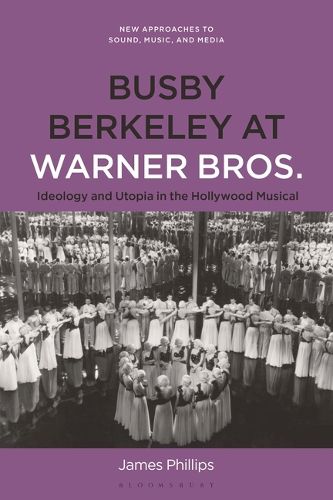Readings Newsletter
Become a Readings Member to make your shopping experience even easier.
Sign in or sign up for free!
You’re not far away from qualifying for FREE standard shipping within Australia
You’ve qualified for FREE standard shipping within Australia
The cart is loading…






Busby Berkeley's big-production numbers are emblematic of the Hollywood dream factory.
Exploring the tensions between escapism and ideological over-coding in the Warner Bros. musical, this book tracks the ways in which Berkeley created spectacles that are both critical and complacent in relation to the society that produced and received them.
Berkeley carried into his images of utopia the assembly plant, the misogyny, the fascism and racism of his day, but his collaboration with the filmmakers (Enright, Bacon and LeRoy) into whose narratives his numbers were spliced likewise involved taking care to draw a line between spectacle and the everyday. The book makes the case that the Warner Bros. musical, with its attention to the specificity and containment of the aesthetic dimension, has corrective lessons to impart for the aestheticized politics not only of the 1930s, but also of the current age.
$9.00 standard shipping within Australia
FREE standard shipping within Australia for orders over $100.00
Express & International shipping calculated at checkout
Busby Berkeley's big-production numbers are emblematic of the Hollywood dream factory.
Exploring the tensions between escapism and ideological over-coding in the Warner Bros. musical, this book tracks the ways in which Berkeley created spectacles that are both critical and complacent in relation to the society that produced and received them.
Berkeley carried into his images of utopia the assembly plant, the misogyny, the fascism and racism of his day, but his collaboration with the filmmakers (Enright, Bacon and LeRoy) into whose narratives his numbers were spliced likewise involved taking care to draw a line between spectacle and the everyday. The book makes the case that the Warner Bros. musical, with its attention to the specificity and containment of the aesthetic dimension, has corrective lessons to impart for the aestheticized politics not only of the 1930s, but also of the current age.